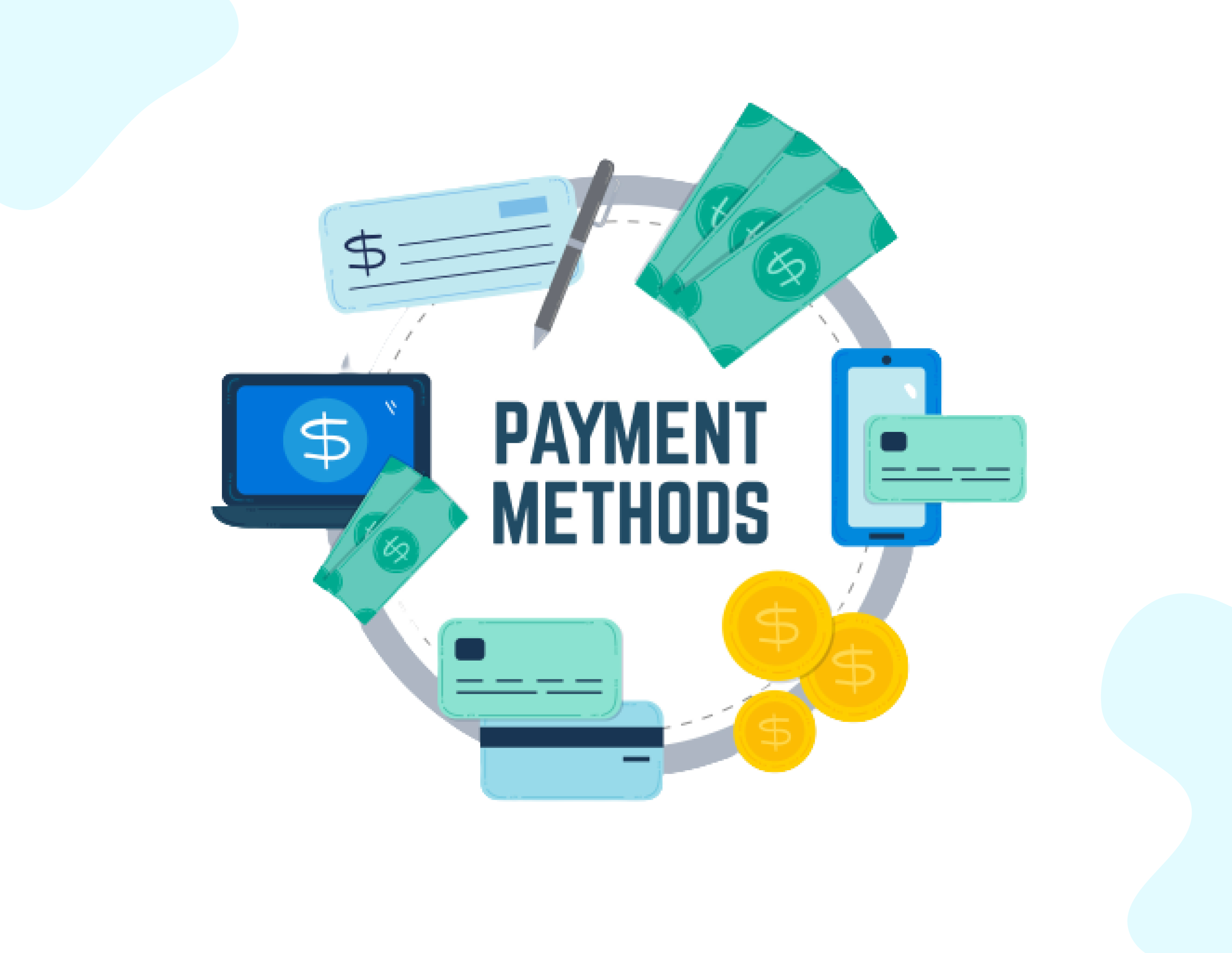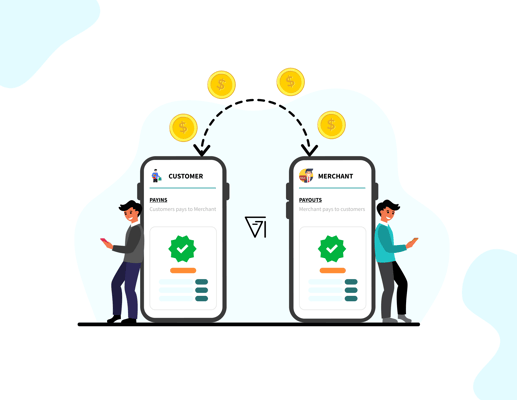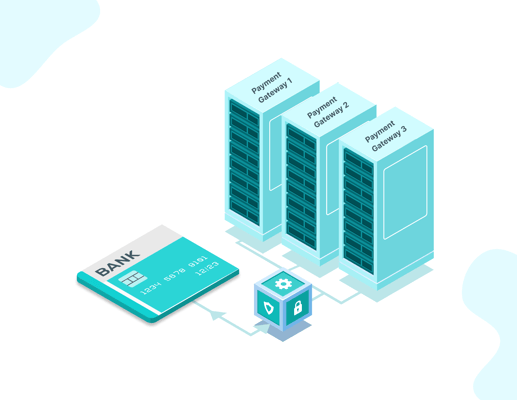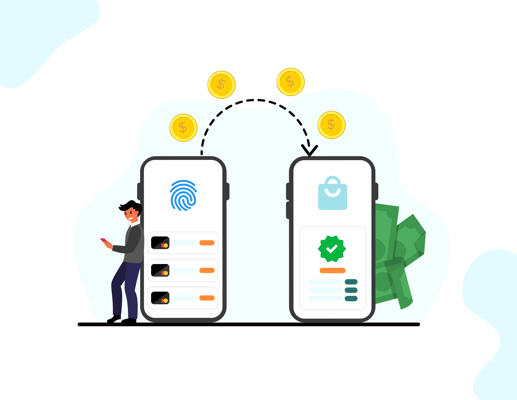As the name suggests, a split payment is a rather simplistic, convenient way to help customers pay for goods and services using various payment methods.
There are different ways a customer can split their payment dues; this includes breaking them into multiple sub-payments or even spreading them over multiple payment channels.
Some common reasons for customers wanting to go down this route can include the following:
-
Splitting a typical payment amongst a few people.
-
Utilizing their payment medium's limits.
Using a mix of different payment mediums, such as cash, credit cards, and digital wallets, to make a single payment.
Types of Split Payment Options
There are different types of split payment options, some of which include:
- Credit Card
- Debit Card
- Cash
- Gift Card s
- Reward Card
- Store Credit Card
- Cheque
- BNPL
Benefits of Split Payments
Split payments are a common occurrence since they offer scores of benefits to the end users. -2.png?width=2932&height=3156&name=Infographic%20-%201%20(5)-2.png)
Here are some expected benefits:
1. Offer higher payment flexibility
The market has plenty of payment options; not every consumer uses the same payment methods as the other. In such a scenario, there is always an option to use various payment options. Customers can split their existing payments and pay via their preferred channel.
2. Deliver a better payment experience
As a consumer, when you pay via your preferred channel, there is an associated level of satisfaction. Split payments allow customers to pay as per their choice, which improves and offers a better payment experience for all involved.
Also Read: What are the most popular alternative payments in South East Asia?
3. Reduce cart abandonment
Customers look for comfort and ease of payments while shopping online/offline. To avoid cart abandonment due to a lack of payment channels, you can add an extra layer of payment options, which includes accepting payments from different gateways.
Customers with various payment options tend to purchase products rather than abandon their purchase mid-way.
4. Improve customer satisfaction and loyalty
Why do people prefer an online e-commerce store like Amazon for their purchases? The online giant has built up a reputation for itself.
It continues to build its rapport with its customers by offering different payment options, allowing the customer to pay as per their will and via their preferred payment channels.
5. Improve conversion rates
Finally, one of the last benefits of using the split payment facility is improved conversion rates. When card abandonment is reduced, customer satisfaction is improved, and a better customer experience is available, brands can quickly improve their conversion rates.
Drawbacks of Split Payments
.png?width=2932&height=3156&name=Infographic%20-%202%20(5).png)
-
Sellers ID
Each seller has a unique seller ID, which is mandatory for assigning and allocating payments. Splitting payments is tedious and can become challenging, especially when you don't have the required authentication to identify sellers via a unique ID.
-
Parties Involved
Global platforms procure products from several sources, which makes party management cumbersome. Imagine having to pay different parties based on the segregation of their sales. This is not possible at an immense scale and can often create hassles on the management front.
-
Combined Payment Methods
Since split payments come with their native terms and conditions, you can't maximize your returns on varying payment channels.
For example, you can't combine the split payment methodology with gift and credit cards. Usually, this is only possible when the consumer pays via two or more credit cards.
-
Same CNPJ
Two or more entities can't have identical CNPJ IDs, so it becomes difficult to distinguish between entities.
-
Nominal fee
Customers can't be charged a nominal fee; they can only charge a percentage of the total cost as a commission.
Use Cases of Split Payments
There are various use cases for split payments, and a few of these options are more popular than others.
Here are a few worthy mentions:
-
E-Commerce Sector
E-commerce platforms sell a variety of products, each from different sellers. However, the payments aren't directed to the sellers immediately. Since a customer makes the initial payment in favor of the e-commerce marketplace, the sellers need to be paid as per the product's listed price. This is where the concept of split payment comes into the picture.
When a customer makes the payment, the seller receives his share through the e-commerce platform via a split payment. This entire process of splitting payments enables better, quicker cash flow while simplifying payment settlement.
-
Education and Ed-Tech Sector
Split payments play an essential role in the education and ed-tech sectors. Primarily, when schools and educational institutions receive payments, they need to allocate these payments to different cost centers within the school's infrastructure to ensure smooth and fast availability of funds.
Split payments pave the way by facilitating such payments and making money transfers easy and seamless.
-
Aggregators
Aggregators like Uber facilitate transactions to each driver using split payments. The payments are collected from different customers and paid to the drivers via this method.
How Can inai Help?
inai is a payment aggregator, and you can use our services to handle split payments in two ways:
1. PayFac
You can seamlessly settle payments to small and medium enterprises, especially if they are enrolled in your system via basic KYC checks. Our platform works alongside different payment gateways to enhance usage and make quick payments.
We make you the master merchant, and all onboarded sub-merchants function as sub-merchants with independent, unique sub-merchant IDs.
With the PayFac method, the payment hits your primary wallet, which is paid to the sub-merchants directly. This process can be quite beneficial, especially when:
-
You want to withhold the money flow, i.e., you don't want it to hit your bank account.
-
Daily statement reconciliation takes time to handle.
-
You want to avoid a complicated refund journey.
-
You want to have a seamless enrolment and KYC experience for your merchants.
However, as a part of this method, your gateway settlement rates and times are restricted by the payment gateway, and there are no different ways to ease this payout process.
2. MEAMI model
In the MEAMI model, we can help merchants and customers simultaneously. Imagine a scenario where a merchant has their own payment gateway. That's where our solution comes in - we collaborate with all types of merchants, and their payment gateways, to ensure swift payment collection and splits, making the process seamless for all parties involved.
This model splits the payments between your wallet and the merchant's wallet. This model can prove to be a breeze when:
-
You want to withhold the money flow, i.e., you don't want it to hit your bank account.
-
Daily statement reconciliation is challenging to handle.
-
You want to avoid a complicated refund journey.
-
You want to have a seamless enrolment and KYC experience for your merchants. You want to avoid bearing payout charges and lengthy settlement times.
3. Traditional Model
Finally, there is one more model, the traditional model. This model is suitable for businesses in their nascent stages. You can use the conventional method to optimize your earnings and withhold money from reflecting in your accounts.
As per this model, the money hits your wallet and reaches your bank account. You can direct the splits, and the payouts are made accordingly.
The benefits of such a model include the following:
.png?width=123&height=71&name=inai%20logo%20-%20dark%201(1).png)

.png?width=4068&height=1080&name=CTA%20(14).png)
.png?width=150&name=karthik%20(1).png)

.png?width=50&name=karthik%20(1).png)

